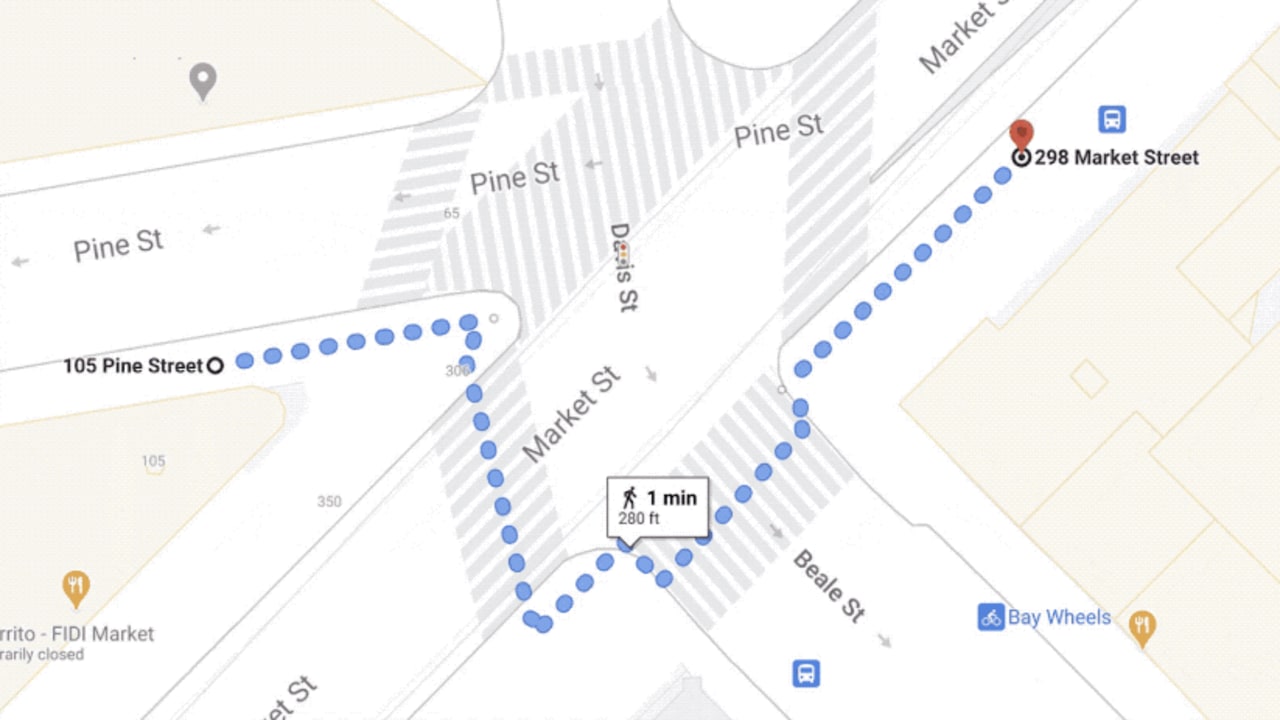Every time you ask Google Maps to provide driving directions, it considers many options and selects one as the optimum route. Naturally, getting you to your destination in an efficient manner is a primary goal. But when you set out on a trip, efficiency isn’t the single most important factor. Above all, you’d like to get there safely. That’s the premise behind a new feature that Google unveiled today during this year’s online version of its I/O developer conference . Google Maps will now identify road segments where drivers tend to slam on their brakes. It will try to route you around such areas even if they’re theoretically part of the most obvious route. Figuring out where the danger zones are so you can avoid them is “one of the most complex problems I’ve been lucky enough to tackle in my time at Google,” says director of product Russell Dicker, who’s worked on Maps off and on for seven years. The company solved it by applying AI to data, as it’s been doing with a bevy of other recent and upcoming tweaks to the world’s most popular mapping app. It’s pretty obvious why hard braking might be a sign of dangerous stretch of road: It’s evidence that drivers are reacting to something unexpected. And if everyone involved doesn’t react quickly enough, the result can be an accident. Indeed, Dicker says that the inspiration for the new Google Maps feature came from an incident a couple of years ago when a Google Maps product manager rear-ended his father’s car at “this intersection with one of those super-short yellow lights.” Everyone was okay, but the mishap led the Googler to delve into the topic of hard-braking incidents— the subject of considerable research by organizations such as the Virginia Tech Transportation Institute. We think that we’re going to have the ability to potentially eliminate around 100 million hard-braking events.” Russell Dicker, Google The more the Maps team looked into the issues that can lead to hard braking—which range from road geometry to sunlight hitting drivers in the eyes—the more comfortable it felt factoring them into its driving directions. “We’ve seen that there can be a sudden increase in hard-braking events along a segment when it’s raining extra hard,” says Dicker. “And so this was the next ‘Aha’ moment for us, because we realized that understanding environmental factors and helping people navigate them successfully was what Google Maps has done for years.” So how does one identify roadways that are prone to hard-braking incidents? Google had an obvious opportunity to collect relevant data: The Google Maps app runs on smartphones equipped with accelerometers, allowing it to detect motion or the abrupt lack thereof. But phones aren’t bolted to vehicles; they’re subject to independent movement of their own within the cabin. That meant that raw accelerometer data was of limited value. Google discovered a workaround in the fact that a decent chunk of Google Maps navigation involves Android Auto —the feature, built into many recent vehicles, that lets you project apps from your phone onto a dashboard touchscreen. A phone that’s powering an Android Auto session is at least tethered to the vehicle it’s in, and Google found that it provided more robust evidence of hard braking

Originally posted here:
For Google Maps’ trickiest challenges, AI is the answer